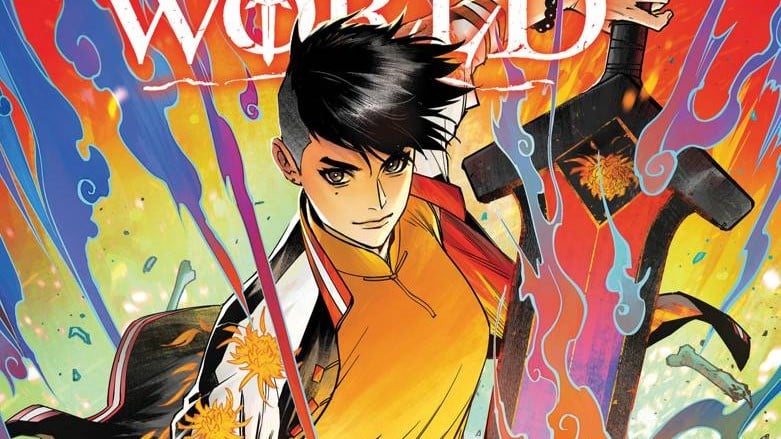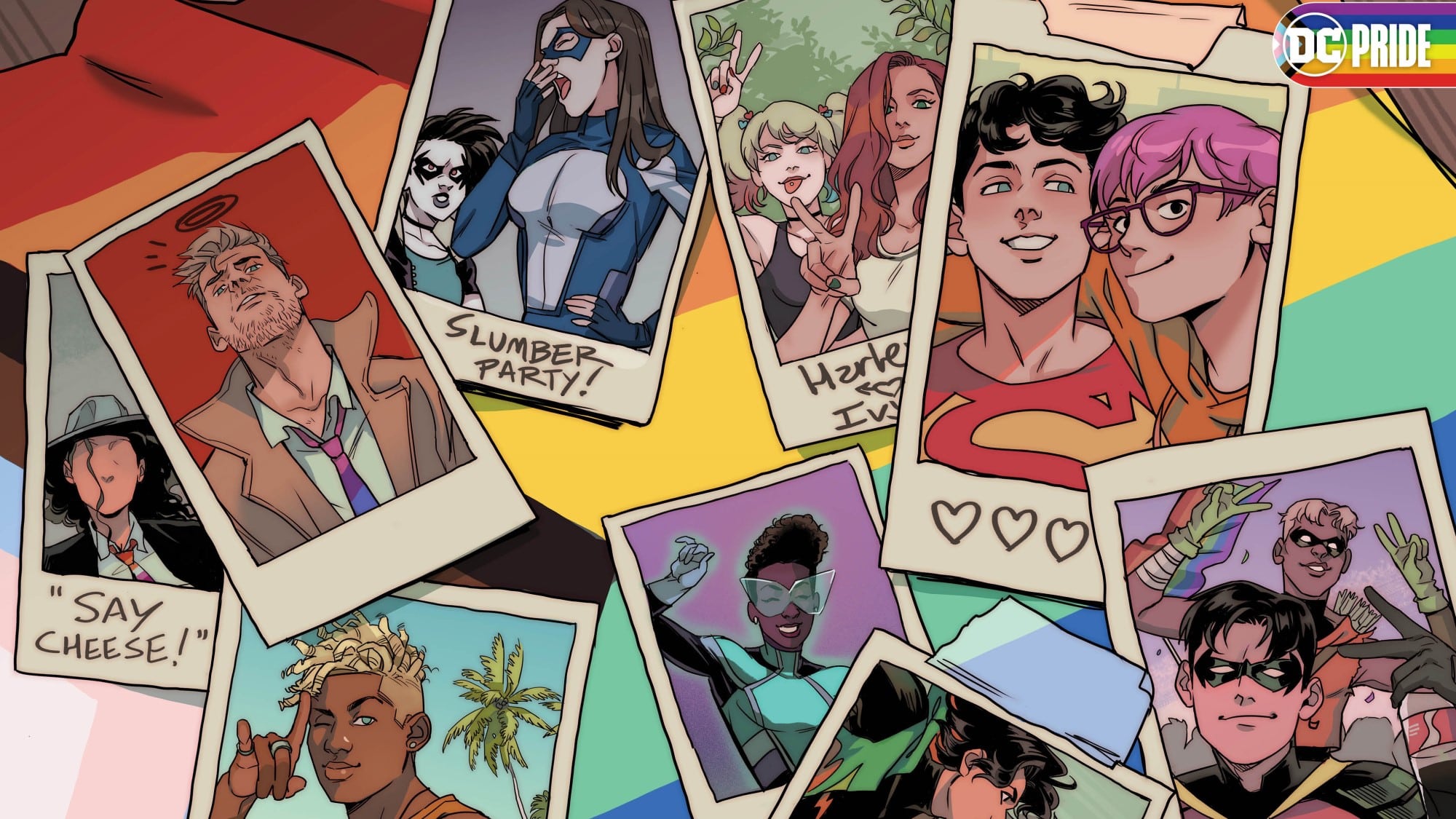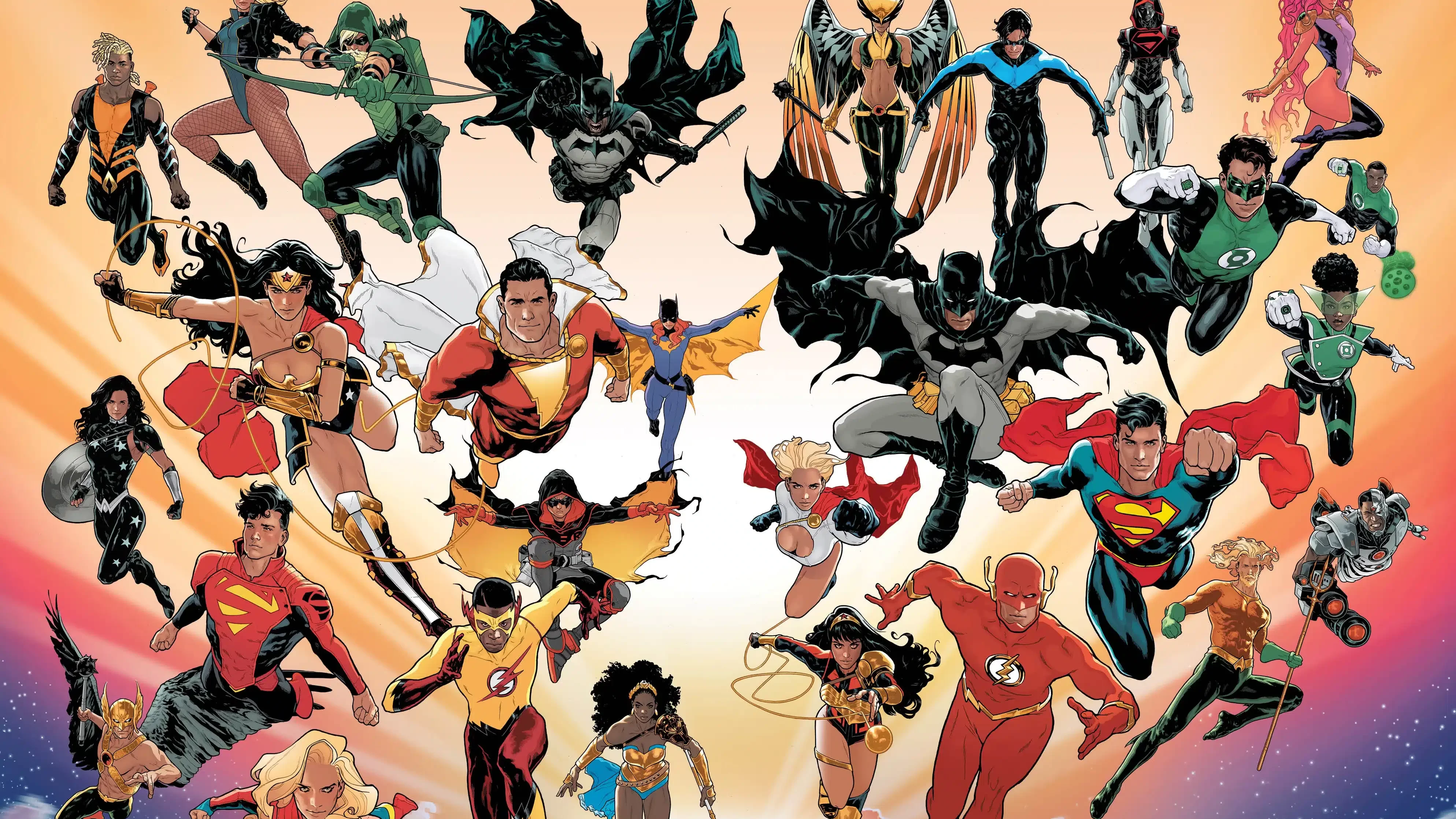If you’ve ever spoken to anyone who’s met or interacted with Keith Giffen at a convention, they typically tend to have one recurring bit of advice to offer from their experience:
Don’t bring up Lobo.
Don’t ask him about it.
He doesn’t like to talk about it.
And it makes sense.
But to understand why, we’ll have to move back a few decades.
The Main Man
During the shifting times of the 1980s, a good decade past the beginning of The Bronze Age, wherein figures like The Punisher had held on for years, and Marvelmen crackled about, Keith Giffen was in his prime. This was the decade wherein he’d draw and be the artistic voice for the most legendary and memorable of all Legion Of Super-Heroes runs. It was the period wherein he’d become its writer too, re-shaping it into its most formally bold visage. It was the period wherein Giffen would revitalize The Justice League via Justice League International, alongside his creative compatriots J. M. DeMatteis and Kevin Maguire. He’d make his mark forever in this era.
But before all that was cemented, before such monuments were firmly built and polished, Keith Giffen co-created something he would go onto regret for the rest of his life.

That was Lobo.
Originally appearing as an antagonist in an issue of The Omega Men, the spin-off time emergent from Marv Wolfman’s newly minted Vega System mythos in New Teen Titans comics, Lobo was born into the world. All the basic ingredients to make the dish that is Lobo were here. But he still was not truly the man he would later go onto become. He still had to simmer longer, to cook properly.
Leaping from that Giffen joint onto the next one in JLI, and then into L.E.G.I.O.N., Lobo would continue to age and grow, as his co-creator seemed content to raise him across the years. The critical moment finally came when Lobo finally got his own mini series when the 90’s arrived. Giffen was involved strongly, while Alan Grant and Simon Bisley were the key creative team.
This is the text by which Lobo’s now iconic Czarnian origins would be forged into what they are, this is the work which would help skyrocket Lobo to a stature he’d previously never enjoyed. And all it would lead to is greater chagrin for his maker.
And it’s all because Lobo is a manifestation of a mismatch between intentionality and reality. Giffen had concocted Lobo as, originally, a vile one-off villain. He was a throwaway, which is why he was quite different even visually in that debut. Giffen wanted to just have a bit of fun with a riff on an ultraviolent asshole. And each time he kept bringing him back, that was his fun. It reached its appropriate extremity in the 90’s, as in an age of ultraviolet Image figures, the period where Cable, Deadpool and Wildstorm heroes were huge, an age where ‘badasses’ like Wolverine and Punisher, who were willing to get their hands bloody, seemed to resonate loudly.
And for that time, that moment, the super-buff, tattoo-ed up Main Man adorned with big guns and tons of metal made sense. He was an absolutely ludicrous piss take on the likes of Wolverine. Lobo was all the veneers stripped away, with the figures he was mocking reduced down to a bloody murderous set of aesthetics. There was no pretense or assumption of decency, justified means or some great, grand meaningful reason or purpose. Lobo just did what he did for the money. He didn’t give a damn about life at all. It was all a laugh at the whole endeavor and enterprise, with a gleeful brutality coating everything.
The violent excesses pushed to the absolute limit for a laugh makes sense for this age and period. The piss-take tracks.
But here’s the problem:
What was supposed to be a piss-take became widely embraced, and not quite in the way the co-creator wanted.
He’d courted the precise audience he’d sought to mock for being so into what they were.
This, as you can imagine, was trouble.
The Morrison Man

In the 2000s, Giffen fled far and away from Lobo wherever he could. Lobo was by now an icon of the grand pantheon of the 90’s superhero comics figures. Few seemed to embody the age better than him, in all its excessive, garish beauty and bloodiness. At once like a 2000AD extra, cut from the fabric that seemed to summon The British Invasion to America back in the 90’s, and like the epitome of Image aesthetics refined, Lobo remained memorable. People dug Lobo, which was helped on by a numerous series of one-shots and other continued series which chronicled the space bastard’s tales.
Giffen wanted to hide like hell from the dude at this point, like a father whistling away into the distance, pretending he doesn’t know his son. The embarrassment was palpable, as was the tired disappointment and frustration. Giffen just wanted to put the sick bastard behind him.
Lucky for him, Grant Morrison was around.
The seminal 2000s weekly series 52, with ‘The Big Four’ of DC at the time (Grant Morrison, Greg Rucka, Mark Waid and Geoff Johns) was made possible as Giffen was the layout artist, making it possible for a legion of pencillers to draw quickly, without having to make all the storytelling calls, as a lot of that work had been done already for them.
And since he was in that Creators Room, involved in the storytelling choices and decisions, and given the whole of the DCU was being charted in the work, Lobo came up.

Morrison, thankfully, had a rather clear take on the matter.
Lobo was the 90s artifact and relic standing about, whose shtick was funnier in a drastically different context and period. The ‘bit’, the ‘gag’ didn’t really work now in the 2000s, wherein his brand of ultraviolence was far more normalized in comics, and no shock or morbid twist was left to be mined. The extremity of that had been reached. Lobo had become the poster child for the very trend he was meant to lampoon, losing all bite and the intended relevance he was forged with.
So Grant Morrison did the obvious: Made it the story.
In 52, Lobo is now a Space Pope for The Church Of The Triple Fish God, and surrounded by Space Dolphins, his favorite pals in the universe. Lobo, the most violent, mayhem-loving man and blood-thirsty bastard in the cosmos, now having to be…a religious pacifist. It’s absurd, but it works. The entire gag now, the whole bit, isn’t “What horribly screwed up thing will Lobo do?”. It’s “How long can Lobo hold out on his promise of pacifism?”
The old irrelevant guy being restrained in-text to act more prim, more proper, because that’s just how he’s gotta be now, he can’t be like he used to be, and the character actively bristling, struggling with that, and that being the ridiculous comedy? That works! It’s a really clever, smart and efficient way to deal with the issue, wherein you’re turning this violence-poster boy into a gag. It’s precisely the kind of thing you’d expect from the writer of Doom Patrol.
It’s great.
It’s a perfect gag that works and fits, accounting for Lobo’s nature and history, and the matter at hand. You can’t go bloodier and more excessive than the 90’s, so you do the opposite: You use restraint in clever ways. It was a spot-on Morrison solution.
But also, that was for only this one story. This Grant Morrison take had an expiration date, and it was coming.
The New Man
Lobo had been made to click again for the 2000s once, but then the 2010s rolled in, summoning with them an all new DC reboot, and thus an all new Lobo.
Cullen Bunn, ever given seemingly the most frustrating assignments at DC, was brought onto recreate Lobo. He’d wanted to have the old ‘classical’ Lobo and the new one they’d create together in the work. But DC editorial preferred and mandated a more…aggressive approach.

This hostile mess didn’t help perception, and kneecapped this new iteration instantly, as the maneuver appealed to virtually no one, including its own writer.
But that said, this new iteration, past the stupid maneuvers of editorial, made some sense. This wasn’t the buff badass of the 90’s. This was the lean and sleek 2010s; Hot Lobo who could fit on The CW. This was the Lobo you could easily see Robert Pattinson playing. He was the perception of the “cool, dark badass” in the modern age. It wasn’t quite Lobo, it was a new character in all but name, but it was a character that did make sense with the spirit of Lobo. The only trouble was…this came up even more empty than almost all the other previous attempts at relevance or humor. There was no real point or direction to this iteration of Lobo, for while the aesthetics of the era had been adopted, little of worth was actually being said or done with said aesthetics. It felt more and more like this had become an even more glorified unintentional parody of itself. The character lacked someone with a vision to really do something with him.
Which perhaps explains why, despite being in-tune with the era, Lobo struggled the most in this era.
The Old Man
The current era of Lobo has proven to be curious, as the classical iteration has been brought back, while the 2010s NuLobo has gone the way of Poochie. But building off that, the real interesting thing is that in the recent years of Teen Titans comics, we saw the introduction of Lobo’s all-new teenage daughter: Crush.

This frames Lobo as explicitly The Old Man in the context of the narrative, as now Crush becomes a key lens to view him through. It gives Lobo a strange angle and strain that he was never designed to have: The Parent Angle.
But that’s also exactly why it’s a really remarkable and solid choice. It’s another surprise. It’s the opposite of the things he was designed for, and that contrast, that clashing of flavors, which Morrison mined so well, is what this plays into, but for their times. In the 2020s, Lobo is especially not relevant. He’s Old. Literalizing that in-text, once again, to play with his dated relic-esque nature within the work, much like Morrison did for the 2000s era, is smart.
Thus we get Lobo’s cool queer daughter, who becomes the character who holds the relevance, and Lobo is framed through her. Lobo now no longer holds the burden of being ‘relevant’, as the text fundamentally makes him the detached dad who is really not cut out for the role he’s supposed to inhabit. There’s all sorts of room there to dig into that. It’s all new, fresh territory and terrain for the character.

And it makes total sense when you look at the landscape too! We’re in an age wherein folks like Wolverine, who Lobo was riffing on, are Dads and have legacy successors to take their role and mantle. So incorporating the current most shifts onto the parody makes sense, and is a natural way to push the character forward.
That Crush and Lobo now share a book, and that it is written by Mariko Tamaki, a queer WOC, makes it all more cool.
Keith Giffen has every right to feel the way he does, and I quite sympathize with him, sharing no love for Lobo myself. But Lobo as a signifier, as an indicator for different periods, sensibilities and concerns, that’s always struck me as fascinating. That he’s morphed in all the ways he has, particularly from his co-creator’s intentionality, going from excessive piss-take to old, out-of-touch dad of a queer kid? I reckon it doesn’t get better than that.
Ritesh Babu is a comics history nut who spends far too much time writing about weird stuff and cosmic nonsense.






